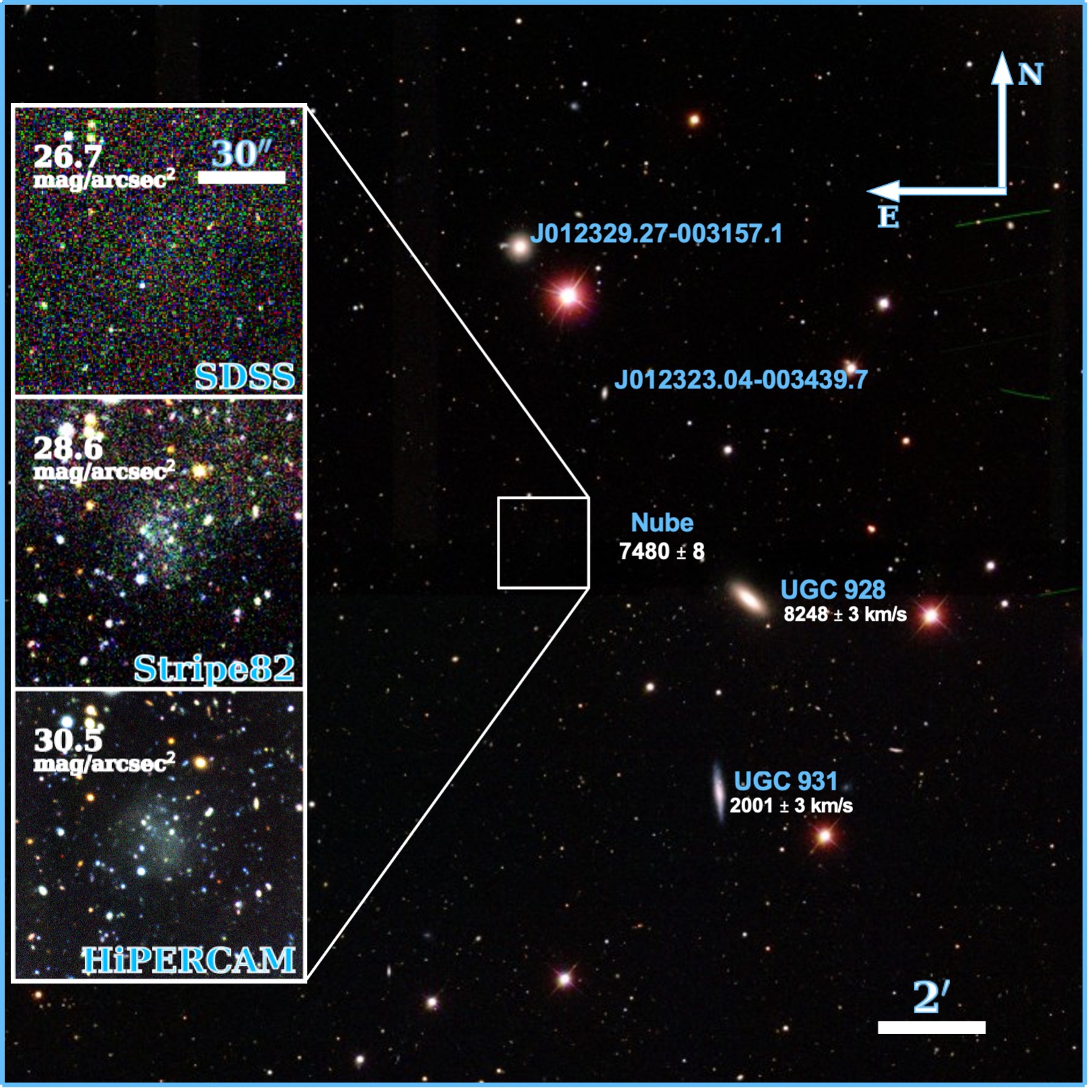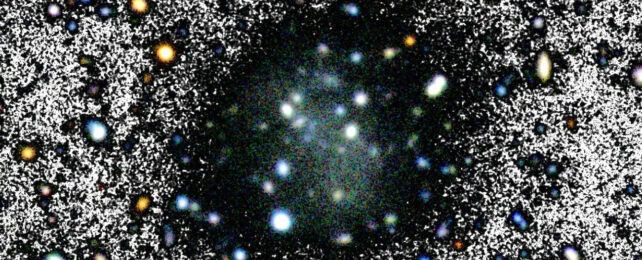Dark matter is a powerful cosmological model, but it isn't without its problems.
In addition to our inability to detect dark matter particles, one issue deals with the number of dwarf galaxies surrounding the Milky Way.
According to the most popular models of dark matter, galaxies should be surrounded by clumps of dark matter within their dark matter halo. Since regular matter tends to gather around dark matter, that means the Milky Way should be surrounded by dwarf galaxies.
While there are several known dwarf galaxies near the Milky Way, there are fewer than predicted by dark matter simulations. But perhaps there are many more dwarf galaxies we just haven't noticed because they are made mostly of dark matter.
We have detected a few of them. They are known as Almost Dark Galaxies (ADGs), and they are particularly dim. We haven't found enough of them to match the cold dark matter model, but we do keep finding them, as a recent study shows.

It describes a newly found dwarf galaxy known as Nube. It was found just by chance in images gathered by the IAC Stripe82 Legacy Project. It is so dim that it doesn't appear in the Sloan Deep Sky Survey (SDSS), which is a bit surprising. But the team noticed what looked like a dark galaxy in an image, and decided to use the Green Bank Telescope to study it further.
Based on the Green Bank data, the galaxy is about 350 million light-years away and has a surface brightness of about 28 mag per square arc second. The galaxy is extremely diffuse, with half of its mass extended over more than 22,000 light years, nearly a quarter of the diameter of the Milky Way.
It has a mass of about 26 billion solar masses, but the mass of the stars in the galaxy is only 390 million solar masses. The galaxy is mostly comprised of dark matter, and it is the largest ultra-diffuse galaxy known.
It was only through a bit of luck that we found this dark matter galaxy. Given its size, it's quite likely that other dwarf galaxies are lurking in our celestial neighborhood, if we can only find them.
But surprisingly, while galaxies such as these support the dark matter cosmological model, this particular galaxy doesn't match the profile of the most popular variant known as cold dark matter.
Instead, it best fits a version known as fuzzy dark matter. So while we're getting closer to the predictions of dark matter simulations, it's clear that there are a few surprises waiting to be accounted for.
So we must keep looking for more of these galaxies. The answers to our dark matter questions are surely there, gathered in the dark.
This article was originally published by Universe Today. Read the original article.
